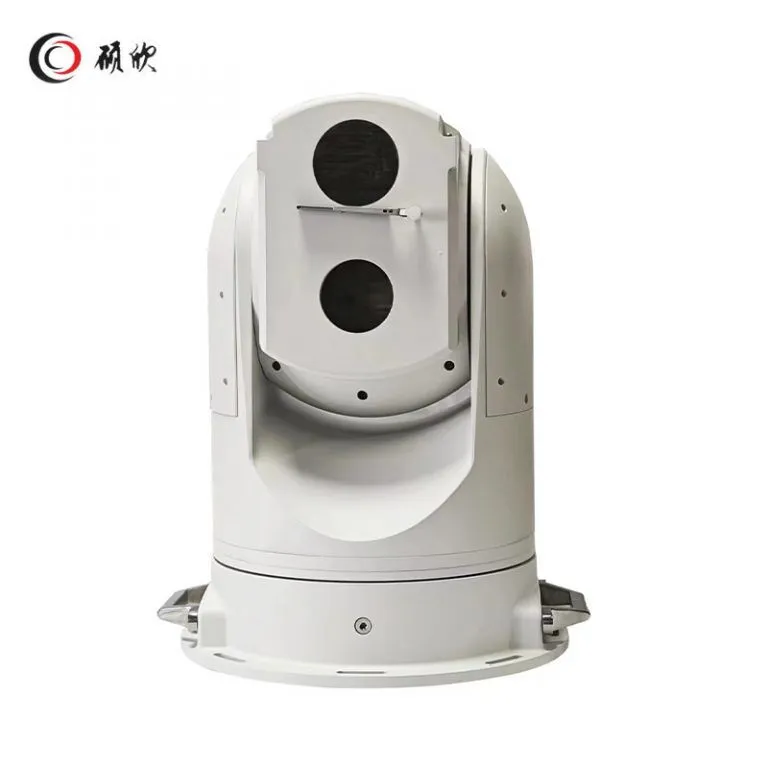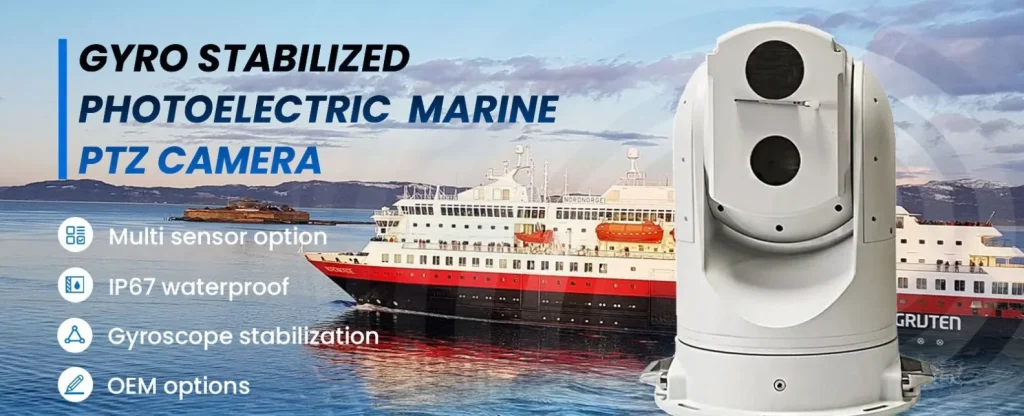Wärmebildtechnik: Von Wärmesignaturen bis zur Präzisionsüberwachung
Wärmebildsysteme haben die Art und Weise verändert, wie Sie ferne Außenplätze beobachten und schützen. Sie könnten für Grenzgebiete zuständig sein. Oder Sie könnten Seewege bewältigen. Vielleicht beschäftigen Sie sich mit Wäldern, die Brandgefahren ausgesetzt sind. Die Fähigkeit, Wärmeveränderungen mit Sorgfalt zu erkennen, funktioniert gut. Es tut dies auch in voller Dunkelheit. Das gibt Ihnen einen großen Vorteil in Ihrer Arbeit.
Grundsätze hinter der thermischen Bildgebung
Wärmebildgebung spottet Infrarotstrahlen, die Dinge aussenden. Alle Gegenstände über absoluter Null geben etwas Infrarotenergie aus. Je heißer das Gegenstand ist, desto mehr Strahlen sendet es. Wärmekameras erfassen diese Energie und verwandeln sie dann in ein Bild. Dieses Bild zeigt Wärmelücken in einer Ansicht.
Diese Kameras unterscheiden sich von denen, die sichtbares Licht verwenden. Sie brauchen kein Licht von herum. Sie arbeiten also in totaler Dunkelheit und schneiden auch durch Blöcke wie Rauch oder Nebel. Die Wärmebildkamera verfügt über einen starken Vanadiumoxid-ungekühlten Sensor. Es bietet 640×480 Klarheit. Dies passt gut zum Auffangen feiner Hitzespuren aus der Ferne.
Wie Temperatur erkannt und gemessen wird
Wärmekameras prüfen Wärme durch die Stärke der Infrarotenergie von Gegenständen in ihrer Sicht. Die Art des Sensors ist hier sehr wichtig. Zum Beispiel Vanadiumoxid ungekühlte Sensoren fühlen Veränderungen gut. Sie bleiben stabil. Dadurch können sie auch bei kleinen Wärmelücken richtig erkennen.
Die 12μm Pixelgröße bringt klare thermische Bilder. Elektronische Zoom-Optionen von ×1 bis ×8 bieten einfache Ansichtsoptionen. Diese Teile lassen Sie kleine Wärmeverschiebungen beobachten. Solche Verschiebungen können zeigen, dass das Getriebe zu heiß wird. Oder sie könnten auf unerwünschten Eintritt in geschlossenen Stellen hinweisen.
Faktoren, die die Genauigkeit der thermischen Detektion beeinflussen
Einige Dinge beeinflussen, wie gut ein Wärmebildgerät Wärme erkennt und prüft. Dazu gehört die Sensorklarheit. NETD steht für Noise Equivalent Temperature Difference. Auch Objektivaufbau und Fokuslänge zählen. Auch Wetter wie Feuchtigkeit oder Luftblocken spielen eine Rolle.
Eine kleine NETD-Zahl wie < 35mK, hilft sehr. Das bedeutet, dass die Kamera kleine Wärmeänderungen finden kann. Dies funktioniert für wichtige Jobs. Denken Sie daran, Stromleitungen zu überprüfen. Oder frühe Brände im Wald zu erkennen.
Die Rolle von Zwei-Achs-Gimbals in Wärmebildsystemen
Sie benötigen Ihre Wärmekamera, um während der Bewegungen stabil zu bleiben. Oder an rauen Stellen. Hier kommen zweiachsige Gimbals ein. Sie sind Schlüsselteile des Setups.
Funktionalität und Stabilisierungsvorteile von Zwei-Achs-Gimbals
Zwei-Achs-Gimbals halten die Kamera auf Seiten-zu-Seite (Pan) und oben-unten (Neigung) Linien stabil. Dieser stetige Halt ist wichtig. Es hilft, wenn Sie von bewegenden Stellen wie Wachwagen oder Booten beobachten. Schüttelungen dort können Bilder durcheinander bringen.
Das intelligente zweiweitige Gyro-Stabilisationssystem erreicht eine hohe Genauigkeit von 0,1°. So bleibt Ihre Uhr scharf. Auch wenn sich die Dinge schwer bewegen.
Verbesserte Bildklarheit und Zielverfolgung mit Gimbal-Integration
Ziele, die sich schnell bewegen oder landen, die sich verschieben, erfordern schnelle Behebungen. Sie wollen, dass das Bild klar bleibt. Gimbal Links machen dies möglich. Sie lassen die Arbeit mit hoher Geschwindigkeit verfolgen, ohne Schärfe zu verlieren.
Das PTZ-Setup liefert erstklassige Ergebnisse. Es verfügt über sehr schnelle 400°/s Pan und 200°/s Neigungsraten. Dies deckt einen vollständigen 360° Drehfläche ab. Sie können große Zonen gut scannen. Keine Schlüsselzeiten gehen verloren, um zu schütteln oder zu verlangsamen.
Temperaturerkennungsfähigkeiten von Shuoxin’ s Wärmebildgebungsprodukte
Wenn Sie nach harten Uhrensystemen für harte Stellen suchen, glänzt diese gyro-stabilisierte fotoelektrische Marine PTZ-Kamera. Es ist heute eine der besten Picks da draußen.
Gyro stabilisierte Marine PTZ Kamera: Leistungsübersicht

Dieses Modell mischt hochauflösenden optischen Zoom mit starken thermischen Bildgebungsfähigkeiten. Es passt perfekt für harte Meeresplätze. Aber es geht auch in der Grenzwacht und der Holzfeuerwacht gut. Das kommt aus seiner weitreichenden Pflege und stabilen Eigenschaften.
Betriebstemperaturbereich und Empfindlichkeit
Hergestellt für wilde Flecken, hält die starke IP67 Schale von -40 ℃ bis 70 ℃. Diese breite Arbeitspalette hält die Dinge am Laufen. Sie können kalte Länder beim ersten Licht beobachten. Oder heiße Sandgrenzen am Mittag.
Anwendung in der maritimen Überwachung und der Suche & Rettung
Die Seearbeit ist oft von Nebel oder Nacht mit geringer Sicht konfrontiert. Eine Wärmebildaufstellung, die schlechtes Wetter wie Nebel oder Nebel überspringt, hilft groß. Diese Einheit bewacht die ganze Zeit. Keine äußere Sache verhindert es. Das ist der Schlüssel zum Finden und Speichern von Jobs. Die Zeit zählt dort am meisten.
Vorteile der Gyrostabilisierung in rauen Meeresumgebungen
Halten Sie sich während der Bewegungen auf Wasser fest. Wellen halten die Dinge zittern. Das kann Bilder verschwimmen. Dieses Modell verfügt über intelligente Posensensoren. Sie fixieren den Kamerawinkel selbst. Folgen Sie Aufenthalten auch in wilden Meereswellen.
Neue bi-spektrale Thermal Imaging Dome PTZ-Kamera: Dual-Spectrum-Vorteil
Zweiwegs-Spektrum-Technologie mischt Licht, das Sie sehen, mit Wärmekarten. Dies verbessert Ihr Verständnis dafür, was vor sich geht. Es hilft am meisten bei harten Aufgaben. Denken Sie an Randschutz oder Pipe-Kontrollen in der Nacht.
Integration von sichtbarem Licht und Wärmebildgebung
Durch die Mischung von optischem Zoom mit Hitzeshow-Ansichten können Sie mit zwei Spektren-Setups sehen, was passiert. Sie erkennen auch versteckte Probleme. Wie Teile, die heiß werden oder Leute, die sich in Pflanzen verstecken.
Unterstützte Temperaturbereiche und Erkennungspräzision
Diese Setups rücken breite Spotbereiche zurück. Sie passen zu Single-Spectrum-Geräten. Aber sie fügen Informationen aus dem Licht hinzu, das Sie sehen. Das macht sie ideal für Polizeirunden auf fernen Straßen. Oder Hügel, wo die Sichtsignale nach Dunkelheit niedrig laufen.
Anwendungsfälle in den Bereichen Grenzsicherheit, Umfangsüberwachung und industrielle Sicherheit
Sie stoppen falsche Übergänge an den Grenzen. Oder Spot hohe Hitze an Power Spots vor Pausen. Zwei-Spektrum-Einheiten geben frühe Heads-Up. Sie reduzieren die Risiken, bevor große Probleme auftreten.
Schlüsselfunktionen, die die Leistung im Temperaturbereich verbessern
Um richtige Lesungen an verschiedenen Stellen zu erhalten, müssen technische Teile gut in Ihren Setup-Plan passen.
Sensorauflösung und NETD (Noise Equivalent Temperature Difference)
Bessere klare Sensoren bringen mehr Detail von fern. Eine niedrige NETD sorgt dafür, dass kleine Wärmeänderungen klar zeigen. Dies ist ein Muss für Fernleistungsprüfungen. Oder große Felder nachts nach falschen Handlungen scannen.
Objektivoptionen und Sichtfeldüberlegungen
Längerer Fokus schneidet Ihren Sehbereich. Doch es erhöht Spot Reach. Das passt zu weiten Jobs wie Grenzrunden. Kürzere Linsen bieten eine breitere Abdeckung. Aber weniger Details weit entfernt. Wählen Sie nach dem, was Ihr Job braucht. Nicht nur für alle Verwendungen.
Bildverarbeitungsalgorithmen für verbesserte Erkennung
Intelligente mathematische Schritte reinigen Lärm. Sie erhöhen Lücken zwischen Gegenständen mit enger Hitze. Dies macht es einfach, Tiere, Menschen oder Maschinen zu unterscheiden. Auch wenn sich die Hitze nahe fühlt.
Leistungsvergleich unter Umweltbedingungen
Sie wollen unter heißer Sonne oder kaltem Wind stetig arbeiten. Diese Setups geben das über viele Wettertypen.
Hochtemperaturumgebungen: Industrielle und Brandüberwachungsanwendungen
In Power Spots oder Wechselstationen läuft das Getriebe planmäßig warm. High-Feel-Thermikameras erkennen seltsame Wärmewege früh. Sie stoppen Pausen. Das spart Zeit. Es senkt auch große Fix-Kosten.
Niedrigtemperaturumgebungen: Arktische Überwachung oder nachtliche Operationen
Wenn Sie Schnee in der Nacht runden, sieht alles kalt aus. Aber die Wärme unterscheidet sich. Eine Person versteckt durch Steine gibt immer noch Wärme ab. Thermische Spuren fangen es. Auch wenn sie sich in Blicken gegen Schnee mischen.
Dynamikbereichsanpassung für Echtzeitüberwachung
Intelligente Reichweiteänderung bedeutet, dass Ihr Setup den Lichtstand selbst behebt. Heiße helle Flecken verbergen keine kühlen Teile. Sie bekommen sogar Ansichten. Egal wie wild ein Rahmen Teil neben dem anderen wird.
Vorteile der Thermal Imaging Gimbal-Lösungen von Shuoxin
Changzhou Shuoxin Electronic Technology Co., Ltd. ist ein Technologieunternehmen. Es konzentriert sich auf das Design und den Bau von Smart Guard Watch Gear. Mit solidem Know-how in jeder Linie, von PTZ-Fahrzeugen bis hin zu Sea-Dome-Kameras, bekommen Sie frische Ideen. Diese Paare mit real-use Vertrauen. Das funktioniert in Bereichen wie Bewegungssicherheit, grüne Wache, Stadtregel, öffentliche sichere Sets, Grenzarbeiten, Stromnetzkontrollen und Holzfeuerhaltungsaufgaben.
Ihr Schub geht an Teilen vorbei. Shuoxin bestanden ISO9001 Qualitätsregelprüfungen. Es erfüllt auch CE / FCC / RoHS-Regeln. Dies hält die weltweiten Vertrauensmarken in Sätzen überall stabil.
Anpassung, Support und Service-Optionen von Shuoxin
Jeder Job hat seine eigenen Hard Spots. Von Landarten bis zu Regelbedürfnissen. Deshalb zählen Fit Picks am meisten. Sie können sich mit Shuoxin’ Fachgruppe. Sie betonen die Zusammenarbeit. Und sie bauten jahrelanges Wissen auf Wachfeldern auf. So setzen sie die besten Passformen für Ihre Arbeitsziele ein.
Sie geben Tech Hilfe Auch. Dazu gehören auch Setup Guides. Plus lernen Sie Pläne. Ihr Team geht schnell darum. Keine Vermutung wartet.
Um zu sehen, wie diese Top-Uhrenwerkzeuge jetzt zu Ihrem Flow passen, überprüfen Shuoxin direkt auf ihrer Hauptseite. Oder fragen Sie nach einem Gespräch über spezielle Sets.
FAQ
F: Welchen Temperaturbereich können diese Wärmebildsysteme verarbeiten?
A: Diese Systeme laufen stetig von -40 ℃ bis 70 ℃. Sie halten sich dank kleiner NETD-Zahlen (<35mK) richtig. Das passt gut sowohl zu kalten Uhren als auch zu Sandrunden.
F: Wie weit kann ich Ziele mit diesen Systemen erkennen?
A: Mit Teilen wie 75mm Fokusobjektiven und 52x optischen Zoom Lichtkameras erkennen Sie weit über 150 Meter hinaus. Fügen Sie Auswahl Laser Reichweite auf 1000 Meter für mehr.
F: Kann ich diese Kameras in mein bestehendes Command Center integrieren?
A: Ja. Sie unterstützen Standard-Wege wie ONVIF & GB/T28181. Plus RS422-Verbindungen. Dies ermöglicht reibungslose Verbindungen zu neuen Steuerstellen.


